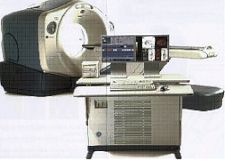TREATMENT PROTOCOL OF HI-C-LO-CHEMO
Affordable and Effective Cancer Treatment
INTRODUCTION
HI-C-LO-CHEMO is the abbreviation for HIGH DOSE VITAMIN C LOW DOSE CHEMOTHERAPY. It can be used for all types and all stages of
cancer. It can also be used for non-solid cancers like leukemia and myeloma. Due to the low dose of chemotherapy
drugs used here, there are no severe side effects usually associated with conventional chemotherapy. Just like
for conventional chemotherapy, patients must have reasonably good liver and kidney functions, so before starting
treatment, and from time to time, blood test for liver and kidney functions must be done. Before every treatment,
full blood count is required.
STEP 1:
A PET/CT scan is done one or a few days before the start of treatment. In order to know the extent
and activity of cancer lesions, for comparison with PET/CT after treatment.
STEP 2:
On day 1, rapid perfusion of abut 500 ml of normal saline in about 30 minutes, containing a
combination of 3 to 5 cheap old generic chemotherapy drugs at 20% to 30% of the normal dose.
STEP 3:
Followed immediately with slow perfusion of 500ml to 1000ml of normal saline or sterile water containing ascorbic
acid at 1.0g to 1.5g per kg of weight of patient. The slow perfusion should last about 5 hours.
STEP 4:
One week later, on day 7, do another PET/CT scan to compare with the first PET/CT to see if there is any
improvement. If there is noticeable improvement, go to STEP 6. If there is no improvement, go to STEP 5.
STEP 5:
If there is no improvement, a new treatment is started using a new combination of about 3 to 5 cheap old
generic chemotherapy drugs. One week after the treatment, a PET/CT is done to see if there is improvement.
If there is still no improvement, another treatment is started using a new combination of 3 to 5 cheap old
generic chemotherapy drugs, and a PET/CT is done one week later. If there is still no improvement after the
third combination of chemotherapy drugs, then the case is considered a failure. If there is improvement,
go to STEP 6.
STEP 6:
When there is noticeable improvement, the same treatment is done once a week or once every two weeks. After
three treatments, another PET/CT is done to see the progress. If the progress is good, the treatment can be
spaced out to once every 2 or 3 weeks. If the progress is slow, the treatment remains at once a week or once
every 2 weeks. After three treatments, PET/CT is done to gauge the progress. If the progress is good, treatment
can be done once every 3 weeks until all the cancer lesions are not active anymore.
STEP 7:
When no more activity is detected in the cancer lesions, the cancer is considered to be in remission, but cancer
tends to reappear if left at this stage, so regular follow-up is done once a month together with one treatment.
After 3 months, a PET/CT is done to make sure that the cancer does not become active again.
STEP 8:
If there is no cancer recurrence, follow-up is then done every 2 months together with a treatment. After 3 times,
a PET/CT is done to see if there is recurrence. If no recurrence, follow-up is then done every 3 months, then
every 4 months, then every 5 months, then every 6 months, until 5 or 10 years, when the cancer can be
considered “cured”.





